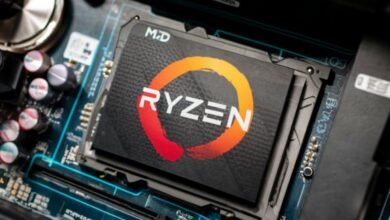Mastering GLnexus Add VCF to Database for Seamless Genomic Data Management

Introduction
There is always something new that can be done with genomic data. Is your organization ready to take yours to the next level? See how to easily import VCF data into GLnexus databases for better performance of the databases.
GLnexus is an enhanced genomic database instrument which assists in the management and analysis of VCF files, which is far from trivial. However, with appreciation of the right processes and actions, then it can be effectively utilized to organize an enormous stock of genomic data. This step-by-step tutorial explains how to import VCF files into a GLnexus database. This process ensures that you can continue optimizing your databases. It helps accommodate the growing amount of genetic data.
Streamlining Genomic Data with GLnexus
Handling large data sets will always be extremely vital in glnexus add vcf to database due to the fast-changing technology. GLnexus is a comprehensive software tool which can effectively manage the import of VCF files into a highly interactive database framework for effective Variant analysis. This tool is particularly important for researchers handling high throughput sequencing data since it simplifies multi VCF integration and querying, making data easily retrievable.
Step-by-Step Guide to Adding VCF to GLnexus Database
It is quite simple to import VCF files to a GLnexus database, albeit the process is sensitive to the kind of VCF files one is working with. First, you need to ensure that the VCF files are well formatted and compatible with the GLnexus program. Subsequently enter the correct GLnexus commands that enables the merging and indexing of VCFs into a single database. This step by step process not only helps you to gather your data but also helps in increasing the throughput of your genomics related activities.
- Prepare and Format Your VCF Files: Make sure that all the VCF files meet the correct format and are compatible with the nexus program. This also entails that one should ensure that they are using reference genomes from the correct sources and further ensure. That the file structures are correct to avoid any integration errors.
- Merge and Index the VCF Files: Together with your VCF files, the GLnexus command line tools merge them into a single database and create indexes. This step simplifies data as it will help in easy querying and retrieval of data from the GLnexus database as the next step.
Benefits of Using GLnexus for VCF Integration
There are numerous benefits associated with the incorporation of VCF files into GLnexus; beginning with the manner in which data is stored and as far as ease of access is concerned. Of course, merging over different VCFs is no easy task, yet GLnexus delivers the essential tools to merge one or even more VCFs, keeping the quality and integrity of the data and providing a simple and easy-to-use interface for working with genomic data. This makes it an instrumental tool for researchers and bioinformaticians. They want to achieve high levels of efficiency in their genomic work. It also helps them maintain accuracy in their research.
- Streamlined Data Management: GLnexus enables one to merge various VCF files into a single database for analysis of multiple datasets making working with a huge volume of genomic data easier.
- Enhanced Data Retrieval: In GLnexus, it is quicker and easier to query for particular variants from large datasets because of its faster indexing and database model.
- Improved Data Integrity: While integrating the VCF files. GLnexus handles the data with great precision to avoid loss of data and to avoid duplication.
- Scalable Solution: Analyzing large-scale variant data is biologically informative. Therefore, GLnexus is a suitable tool for analyzing big genomic data in the context of a project.
- User-Friendly Interface: It has an easy and efficient interface in the form of a command line. This makes the integration of VCF even simpler for users who are not very familiar with bioinformatics.
Common Pitfalls When Adding VCF to GLnexus Database
FAQs
What is GLnexus used for?
Researchers use GLnexus to manage and integrate genomic variant data from VCF files into a centralized database.
How do I add a VCF file to GLnexus?
You can add a VCF file to GLnexus by using the appropriate GLnexus commands to merge and index the VCFs into the database.
Why is it important to optimize GLnexus performance?
Optimizing GLnexus performance ensures faster query responses and efficient handling of large-scale genomic data.
Can GLnexus handle multiple VCF files?
Yes, GLnexus can merge and manage multiple VCF files, providing a streamlined way to organize genomic data.
What should I do if I encounter errors when adding VCF files?
If you encounter errors, check for correct file formatting and compatibility with GLnexus. And review the commands used for any mistakes.
Conclusion
Any genomic researcher or bioinformatician should be well acquainted with skills on how to properly add VCF files into a glnexus add vcf to database. The tool is more than just an efficient way of organizing your data, but it also guarantees that your genomic data is well arranged. By following best practices and avoiding common research fallacies, you can improve your workflow. This, in turn, helps increase the percentage of accuracy in your work. Adhering to these guidelines ensures more reliable and precise results.



